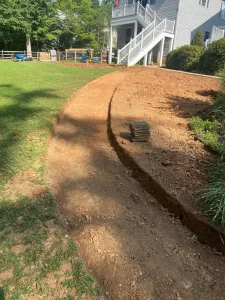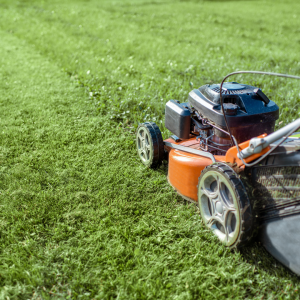In the realm of lawn care, the significance of fertilization often goes overlooked, yet it holds the key to unlocking the full potential of your grass. It’s not just about scattering some nutrients; it’s about nourishing your lawn, providing it with the essential elements for robust growth and vibrant greenery. Fertilization isn’t a one-size-fits-all solution either; it requires understanding your specific soil composition, grass type, and environmental factors. Through this blog series, we delve deep into the art and science of fertilization, exploring different techniques, understanding fertilizer types, and uncovering the secrets to achieving a lush, healthy lawn that becomes the envy of the neighborhood.
Understanding Soil Composition: The Foundation of Fertilization
To truly unlock the power of fertilization and nourish your grass, it’s essential to comprehend the intricate dynamics of soil composition. Soil serves as the canvas upon which your lawn’s health is painted, dictating its ability to absorb nutrients and support plant growth. By conducting soil tests, you can identify deficiencies and excesses in essential elements like nitrogen, phosphorus, and potassium. Understanding the pH level of your soil is equally crucial, as it influences nutrient availability. Armed with this knowledge, you can tailor your fertilization approach to address specific soil needs, laying a solid foundation for a thriving lawn.
Choosing the Right Fertilizer: Navigating the Options
When it comes to selecting the right fertilizer for your lawn, navigating the multitude of options can be overwhelming. Understanding the specific needs of your grass and considering environmental factors are crucial steps in making an informed decision. Organic fertilizers offer natural solutions that promote soil health and minimize environmental impact. Synthetic fertilizers, on the other hand, provide quick nutrient boosts but require careful application to prevent runoff and pollution. By weighing factors such as nutrient content, release rates, and environmental impact, you can tailor your choice to suit your lawn’s needs effectively.
- Organic fertilizers: Derived from natural sources, promoting soil health and microbial activity.
- Synthetic fertilizers: Provide quick nutrient boosts, requiring careful application to prevent runoff and pollution.
- Nutrient content: Consider the balance of nitrogen, phosphorus, and potassium for optimal growth.
- Release rates: Determine whether slow-release or quick-release fertilizers are more suitable for your lawn.
- Environmental impact: Evaluate the sustainability of the fertilizer and its potential effects on the ecosystem.
Choosing the right fertilizer is a critical step in maintaining a healthy, vibrant lawn. By considering factors such as organic versus synthetic options, nutrient content, release rates, and environmental impact, you can make an informed decision that promotes both the well-being of your lawn and the environment.
Timing is Key: Seasonal Strategies for Optimal Fertilization
The timing of fertilization plays a pivotal role in its effectiveness, with seasonal nuances guiding your approach. Spring heralds the awakening of dormant lawns, signaling the ideal time for a nitrogen-rich fertilizer to jumpstart growth. As summer temperatures rise, it’s crucial to adjust your fertilization schedule, focusing on maintenance rather than stimulation to avoid stress on your grass. Fall marks a critical period for root development, making it the perfect time for a balanced fertilizer application to strengthen your lawn before winter dormancy. By syncing your fertilization efforts with the natural rhythms of the seasons, you can maximize nutrient uptake and foster a resilient, healthy lawn year-round.
Techniques for Application: From Spreading to Spraying
Applying fertilizer is not merely a matter of scattering it across your lawn; it’s an art form that requires precision and care. Traditional methods like broadcasting with a spreader offer even coverage but demand attention to calibration to prevent over-application or patchiness. For smaller areas or targeted treatments, hand spreading provides greater control over distribution. Alternatively, liquid fertilizers can be sprayed directly onto the grass, offering rapid absorption and immediate results. However, proper technique is paramount to avoid drift and ensure uniform coverage. Whether you opt for granular or liquid fertilizer, mastering the application techniques is essential to unlock the full potential of fertilization and achieve a lush, green lawn.
Environmental Impact: Sustainable Practices in Fertilization
In the realm of lawn care, environmental impact is a critical consideration, especially concerning fertilization practices. Sustainable approaches not only promote the health of your lawn but also minimize harm to the surrounding ecosystem. By adopting environmentally friendly techniques, you can mitigate pollution, reduce greenhouse gas emissions, and protect waterways from contamination. Embracing sustainable practices in fertilization is not only responsible stewardship of the environment but also a step towards creating a greener, healthier planet for future generations.
- Soil Testing: Conducting regular soil tests helps determine precise nutrient requirements, minimizing excess fertilizer application and reducing environmental runoff.
- Organic Alternatives: Choosing organic fertilizers derived from natural sources promotes soil health, microbial activity, and long-term sustainability while minimizing the risk of harmful chemical runoff.
- Proper Timing: Applying fertilizers during optimal conditions and seasons ensures maximum nutrient uptake by plants, reducing waste and environmental impact.
- Nutrient Management Plans: Developing customized nutrient management plans based on soil composition and plant needs helps optimize fertilizer use, minimizing excess and potential environmental harm.
- Responsible Application: Implementing precise application techniques, such as using spreaders or sprayers, and following manufacturer guidelines reduces the risk of over-application and minimizes environmental contamination.
In conclusion, adopting sustainable practices in fertilization is essential for promoting both the health of your lawn and the well-being of the environment. By incorporating methods such as soil testing, organic alternatives, proper timing, nutrient management plans, and responsible application, you can play a vital role in preserving our ecosystems while achieving a vibrant, thriving lawn. Let’s strive to be stewards of the earth, nurturing our landscapes in harmony with nature.
Troubleshooting: Addressing Common Fertilization Challenges
Even with the best intentions and practices, fertilization can sometimes yield unexpected outcomes. Yellowing grass, patchy growth, and excessive thatch buildup are just a few common challenges that may arise. Understanding the underlying causes, whether it be nutrient deficiencies, improper application, or soil compaction, is the first step towards resolution. Adjusting your fertilization regimen, aerating compacted soil, or implementing targeted treatments can help rectify these issues and restore your lawn to its former glory. By staying vigilant and responsive to signs of distress, you can navigate through fertilization challenges and cultivate a resilient, thriving lawn that becomes the envy of the neighborhood.
Conclusion
In conclusion, mastering the art of fertilization is not just about nourishing your lawn; it’s about understanding its unique needs and fostering its health sustainably. By delving into soil composition, selecting the right fertilizer, and timing applications appropriately, you lay the groundwork for a lush, resilient lawn that thrives throughout the seasons. Embracing sustainable practices and addressing common challenges ensure not only a beautiful lawn but also a healthier environment. So, armed with knowledge and care, let’s embark on a journey to unlock the full potential of fertilization and transform our lawns into vibrant, green oases. For expert assistance in achieving your lawn care goals, contact Precision Lawn and Landscape at 8193a Euclid Ct, Manassas Park, VA 20111, or call us at 703-244-6407. Your lawn’s transformation awaits!




